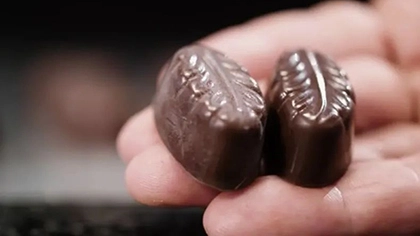25 Jan 2024
Crystallization is the process by which a substance is precipitated in a crystalline state from a vapor, solution, or molten substance. When drugs crystallize, if different solvents and processes are used, the number, position and lattice form of drug molecules in the crystal cell are different, and different crystal structures are formed. The different lattices of the crystalline forms lead to their different physical and chemical properties such as solubility, melting point and stability. For crystalline products, the crystal quality is generally judged from several indexes, such as purity, crystal type, crystal habit, particle size distribution and dissolution rate. Through the crystallization technology to realize the control of drug crystal shape, in order to achieve the purpose of improving drug efficacy and biological activity.
Step 1: Determine the target quality of the product
Step 2: Scientific analysis of the crystallization system
Step 3: Design the craft framework
Step 4: Determine the scope of safe operation
Step 5: Process details within safe operating range
Generally, the process design is carried out through concentration/suspension density, supersaturation, system mixing effect, crystal seed, secondary process control, endpoint conditions, etc.
Other crystallization technology: spherical crystallization technology (divided into wet spherical coalation method and emulsified solvent diffusion method), which is suitable for particle properties that cannot be improved by conventional means; Ultrasonic crystallization technology, used to prepare special seed crystal; Supercritical fluid crystallization; High throughput crystallization technology; Quasi-emulsified crystallization; Microrecrystallization method; Crystallizing technology such as crystallizing agent.
Optimization of The Crystallization Process
The molecular structure of drugs is becoming more and more complex. Because of the different distribution of impurities, the development of the crystallization process can help us to achieve the goal of scaling up the process to the production scale (such as obtaining a unique target crystal, obtaining a high purity product, obtaining suitable particles for preparation, simplifying the operation and reducing the cost, etc.).
When the crystallization process objectives have been determined, different research methods are selected for different process objectives, and the general optimization approaches are as follows:
Crystal STRUCTURE and SHAPE CONTROL: Crystal structure and shape control is not only the requirement of efficiency, under certain circumstances, is the key to achieve crystal purity control. Generally, by controlling the operating conditions, such as controlling the crystallization process of different supersaturation states, different mixing strength, adjusting the crystallization temperature to control, followed by solvent additives and solute additives for crystal structure and shape control.
Crystal size and distribution control: continuous crystallization or batch operation crystallization should be considered. The control of particle size and particle size distribution in the continuous crystallization process is mainly controlled by controlling the saturation (growth rate, nucleation rate), stirring intensity (suspension state of solid, nucleation rate), fine crystal exclusion, grading discharge, and other means. The granularity and granularity distribution of batch operation are mainly controlled by finding the best operation schedule, controlling the seed adding, and controlling the supersaturation curve.
Purity control: The purity of the crystal itself is very high, and the impurities are mainly caused by the wrapping of the crystal and the adhesion of the mother liquid on the surface. Increasing the particle size and reducing the distribution width of the particle can solve the problem of small crystal, wide distribution and incomplete solid-liquid separation. Controlling the crystal shape and crystal habit can solve the problem of separation difficulty caused by irregular crystal shape. Controlling supersaturation and crystal growth rate can also solve the peritectic mother liquor in the crystal; Controlling the nucleation rate can change the coalescence of crystals and reduce the peritectic phenomenon.
Process industrialization technology: generally through the scale-up experimental method and computational fluid science scale-up.
The technological parameters in the crystallization process were optimized.


